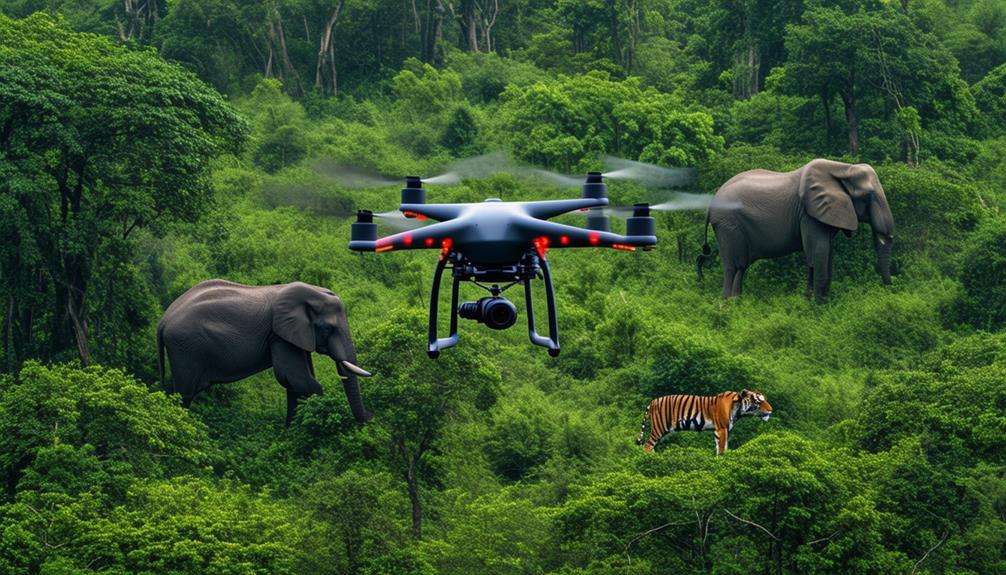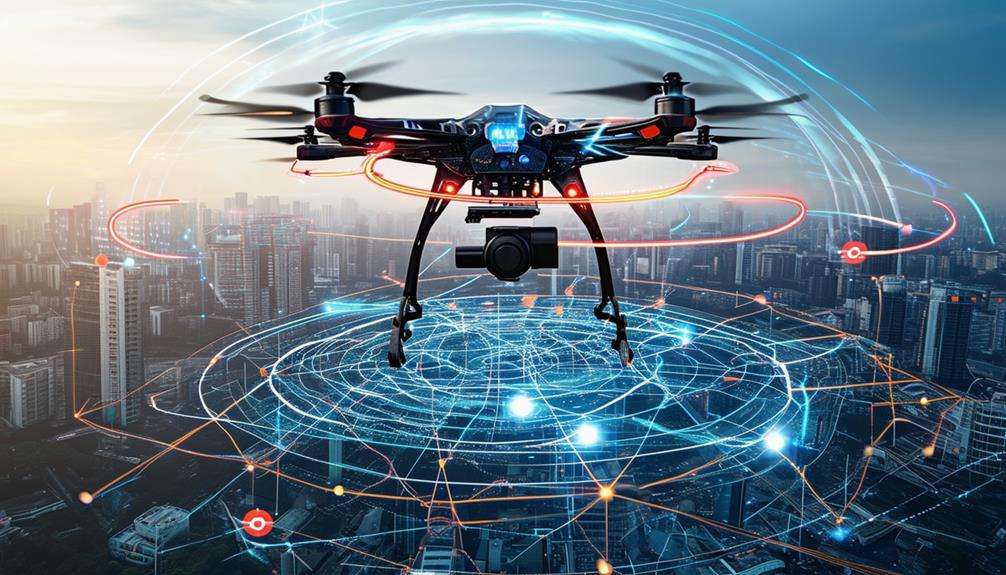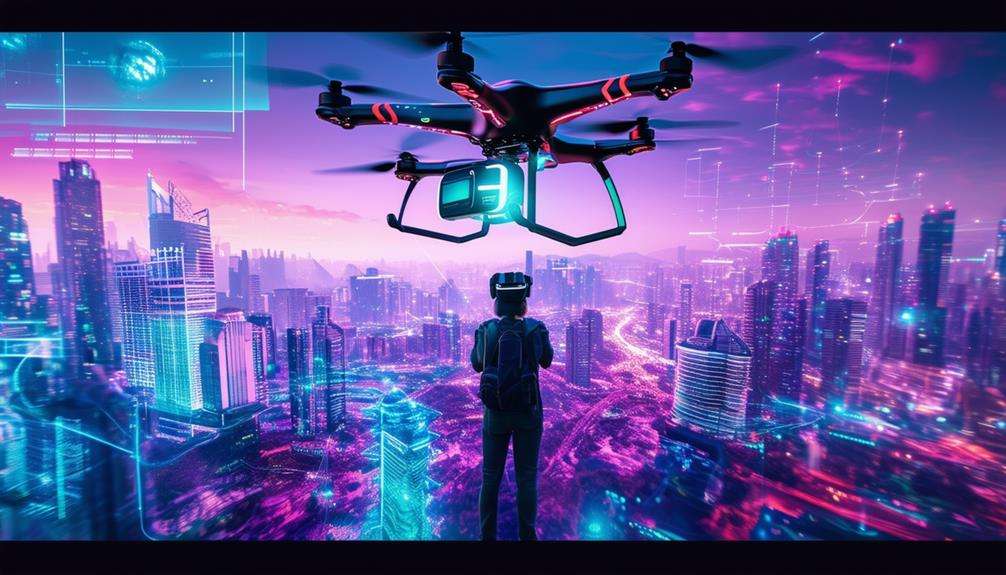The Role of UAVs in Border Security: How Drones Are Enhancing Surveillance
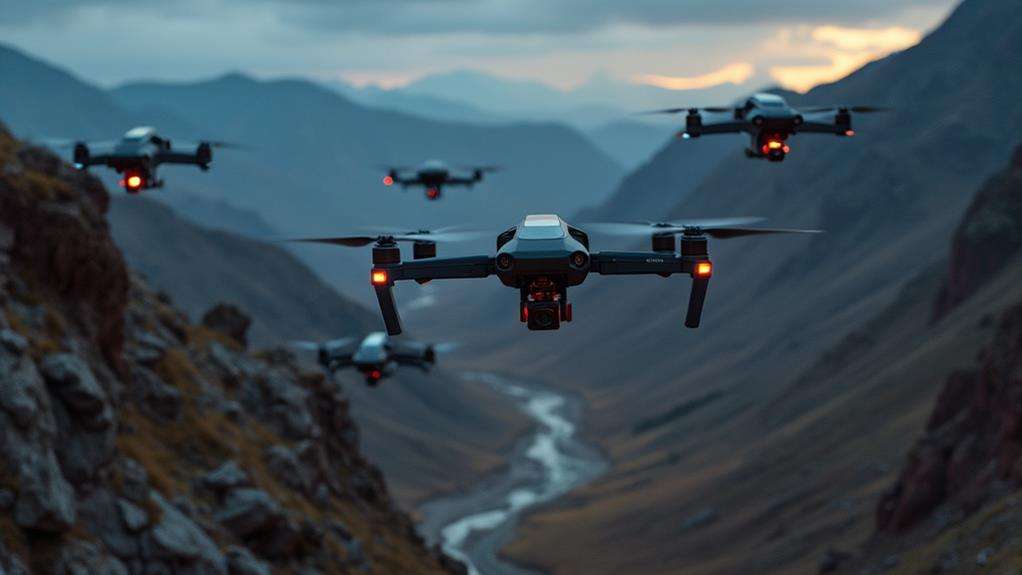
Unmanned Aerial Vehicles (UAVs), commonly known as drones, are transforming border security with their advanced surveillance capabilities. These devices provide real-time threat detection and extensive area coverage, making it easier to monitor vast and previously inaccessible terrains while optimizing costs and resources. UAVs enhance situational awareness and serve as a deterrent to illegal activities, significantly impacting future border management strategies. Their role in national security continues to expand, offering new possibilities for more effective and efficient border control.
Evolution of Border Patrol Drones
The evolution of border patrol drones has significantly reshaped how nations secure their borders. UAVs like the Predator B, introduced in the early 2000s, marked the beginning of advanced technology integration for U.S.-Mexico border surveillance. These drones provided Customs and Border Protection (CBP) with real-time data, enhancing their ability to monitor vast areas effectively and improving response times.
By 2013, the deployment of the Euro Hawk signified a broader global acceptance of UAVs for various surveillance purposes. These systems became instrumental in gathering crucial intelligence and maintaining security across different regions. Between 2018 and 2020, the focus shifted towards customizing border patrol drones to meet diverse operational conditions. This customization improved their effectiveness significantly, allowing better adaptation to varying terrains and weather conditions.
Recent advancements in the 2020s have further expanded the capabilities of drones. Modern UAVs now boast increased endurance, enhanced payload capacity, and greater autonomy. For instance, JOUAV drones can achieve up to 480 minutes of flight time, cruise at 100 km/h, and carry payloads ranging from 1 kg to 20 kg. Equipped with thermal imaging, these drones provide unmatched surveillance capabilities, making them indispensable tools for border security operations.
Technological Advancements in UAVs
The evolution of border patrol drones has laid a robust foundation for modern surveillance, but recent technological advancements in UAVs have significantly enhanced these capabilities. Modern drones, such as those from Skydio, are now equipped with advanced AI for autonomous navigation, enabling them to operate safely in complex environments without constant pilot intervention.
The integration of high-resolution cameras and thermal imaging sensors has greatly improved the effectiveness of border surveillance, allowing for both day and night operations. These sensors enhance the efficiency of detecting and tracking potential threats.
Current UAVs have impressive payload capacities ranging from 1 kg to 20 kg, enabling them to carry mission-specific gear such as communication tools and additional sensors. This flexibility allows drones to be customized for various surveillance tasks.
Advancements in endurance and operational range have also been significant, allowing drones to achieve extended flight times and cover vast areas. With operational ranges up to 200 km and cruising speeds of 100 km/h, these UAVs are well-suited for extensive border surveillance missions.
- Endurance: Up to 480 minutes of flight time
- Autonomy: Advanced AI for autonomous navigation
- Sensors: High-resolution cameras and thermal imaging
- Range: Operational range up to 200 km
These advancements ensure that modern UAVs are highly capable and adaptable tools for effective border surveillance.
Applications in Border Security
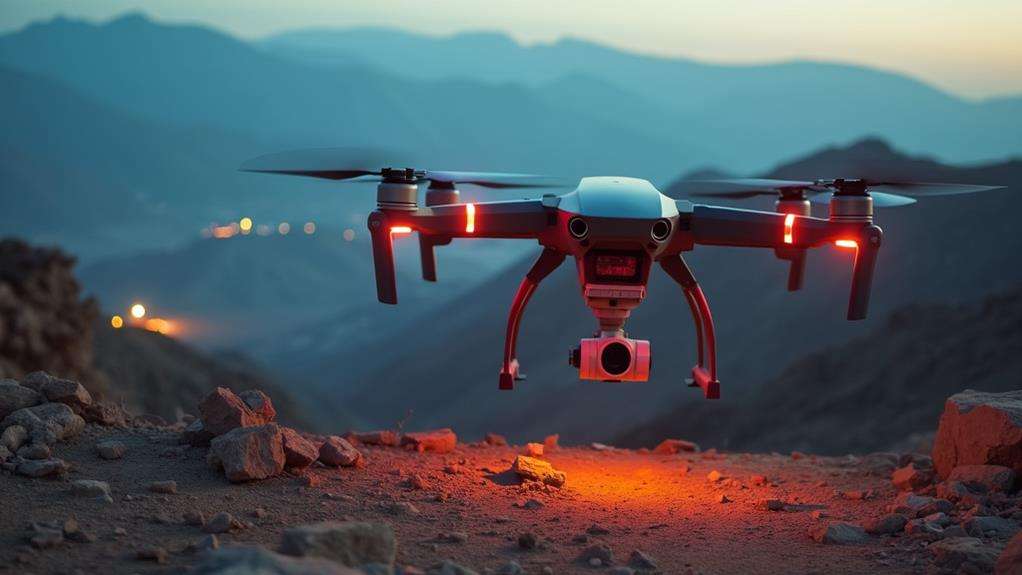
Drones play a crucial role in enhancing border security by offering rapid aerial coverage and real-time threat detection that surpass traditional methods. Outfitted with advanced sensors and thermal imaging, these UAVs deliver continuous monitoring, even in adverse conditions. Furthermore, they serve as a cost-effective alternative to manned aircraft, making surveillance operations both efficient and economical.
Rapid Aerial Coverage
Drones significantly enhance border security by providing rapid and comprehensive surveillance across the 13,000 miles of U.S. land and maritime borders. Equipped with advanced sensors and high-resolution cameras, these drones enable real-time data collection, allowing law enforcement to monitor activities and respond swiftly to potential threats. This aerial capability ensures that large stretches of the border can be surveilled more efficiently and effectively than traditional methods.
For instance, drones from JOUAV have an operational range of up to 200 km, allowing extensive area coverage without frequent repositioning. This capability is crucial for maintaining continuous surveillance and ensuring comprehensive monitoring. Additionally, drones offer a cost-effective and low-risk alternative to traditional aircraft, reducing operational costs and minimizing personnel risks.
Moreover, drones are equipped with thermal imaging capabilities, enabling effective monitoring even in low-light conditions. This feature is essential for detecting illegal activities that might otherwise go unnoticed.
- Rapid aerial coverage over 13,000 miles of borders
- Real-time data collection with advanced sensors
- Operational range up to 200 km
- Cost-effective and low-risk alternative to traditional aircraft
- Thermal imaging for low-light monitoring
Real-Time Threat Detection
Equipped with high-resolution cameras and advanced sensors such as thermal imaging, drones provide exceptional real-time monitoring of expansive border areas, significantly enhancing threat detection capabilities. These UAVs transmit immediate data to ground control stations, enabling law enforcement to respond swiftly to suspicious activities detected during surveillance.
Integrating AI allows drones to identify and track moving objects, including vehicles and individuals, facilitating proactive threat management. This technological edge enables border patrol agents to detect potential illegal crossings or smuggling operations more efficiently than traditional methods. The aerial surveillance capabilities of drones enable rapid coverage of large areas, significantly improving overall threat detection efficiency.
Additionally, the visible presence of drones acts as a deterrent to illegal activities, reducing the likelihood of criminal behavior along the border. The real-time intelligence gathered by these drones provides law enforcement with actionable data, enabling quicker and more effective responses. In essence, drones are revolutionizing border security by offering enhanced surveillance and superior threat detection, making border patrol efforts more robust and reliable.
Cost-Effective Surveillance
Implementing drones in border security provides a highly cost-effective surveillance solution compared to traditional manned aircraft. With operational costs typically ranging from $50,000 to $100,000+, UAVs offer substantial budget savings. By employing these economical tools, you can significantly enhance surveillance efficiency over vast areas, which ground patrols often struggle to cover due to their extensive nature.
Equipped with high-resolution cameras and advanced sensors, drones deliver real-time data at a fraction of the cost of physical border infrastructure. Their lightweight design and agile deployment capabilities allow for quick repositioning, enhancing efficiency without the high operational costs associated with ground units.
Key benefits include:
- Budget Savings: UAVs reduce operational costs significantly, with expenses ranging from $50,000 to over $100,000.
- Enhanced Efficiency: Drones can rapidly cover vast areas, maximizing surveillance capabilities.
- Real-Time Data: Equipped with high-resolution cameras and advanced sensors, drones provide immediate data collection.
- Agile Deployment: Quick repositioning capabilities allow for enhanced surveillance without high operational expenses.
Incorporating UAVs into border security operations not only improves overall effectiveness but also contributes to environmental sustainability by maintaining a smaller carbon footprint compared to traditional methods.
Advantages of Using Drones
Drones present numerous advantages for border security, making them essential in contemporary surveillance operations. They provide rapid coverage of extensive border areas, allowing for the monitoring of regions that are hard to reach with traditional methods. Equipped with advanced sensors and high-resolution cameras, drones gather real-time data, enhancing situational awareness and enabling swift decision-making.
A primary benefit of using drones is cost-effectiveness. They reduce operational expenses compared to manned aircraft and minimize risks to personnel involved in border security. This allows for more efficient resource allocation while maintaining comprehensive surveillance.
Drones also act as a deterrent to criminal activities. Their presence in the air discourages illegal crossings, strengthening overall security measures. Advanced features like thermal imaging and facial recognition further increase their effectiveness. Thermal imaging helps detect individuals and vehicles in low-visibility conditions, significantly improving efforts against illegal immigration and drug trafficking.
Incident Response and Monitoring
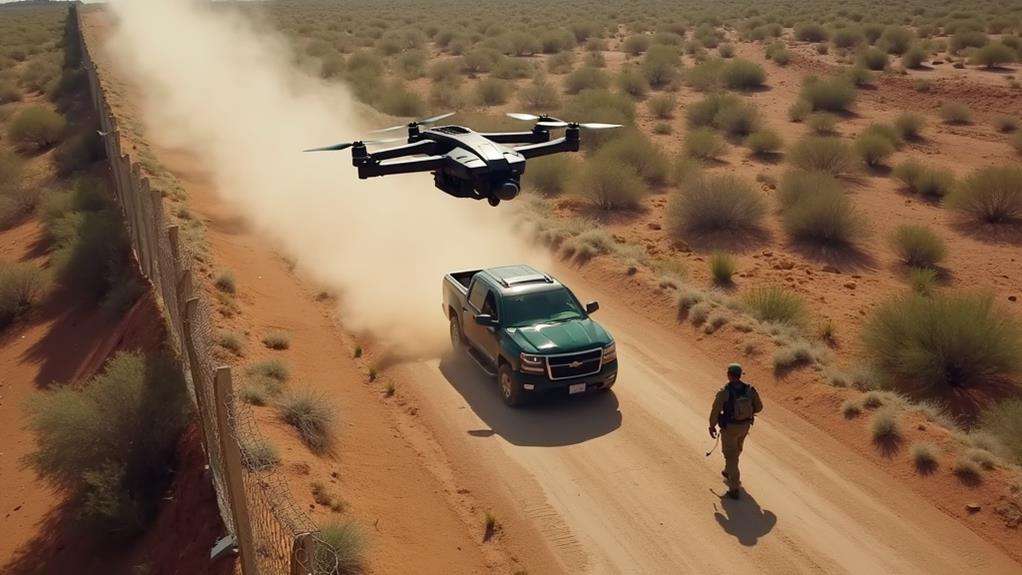
Drones are revolutionizing incident response and monitoring in border security operations. Equipped with real-time video feeds, these aerial devices significantly enhance situational awareness, enabling border patrol teams to anticipate and manage potential issues effectively. Whether monitoring crowds or detecting unusual patterns, drones provide the surveillance necessary for coordinating strategic responses as incidents unfold.
Additionally, drones act as flying cell towers, boosting communication capabilities for border patrol teams in remote areas. This ensures seamless access to critical information, allowing for rapid response and effective incident management. For example, a drone equipped with a loudspeaker can issue real-time instructions and warnings to a crowd or individual, drastically improving public safety and operational efficiency.
The multifunctional nature of drones allows for quick adaptation to various incidents, making them indispensable tools in border security. Their ability to switch roles—from surveillance to communication hubs—ensures that border patrol teams are always prepared.
- Enhanced situational awareness with real-time video feeds
- Improved communication capabilities in remote areas
- Effective crowd management through real-time instructions
- Rapid response and incident management
Regulatory Challenges and Costs
Navigating the regulatory landscape for deploying UAVs in border security presents significant challenges. Various regulatory constraints, especially in regions with overlapping jurisdictions, cause compliance issues. These hurdles require continuous adaptation to diverse regulatory frameworks, impacting operational efficiency negatively.
Privacy concerns also arise when using UAVs for surveillance. The public is often worried about how data is collected and used, leading to demands for stricter regulations. Addressing these concerns is crucial for maintaining public trust and ensuring lawful drone use.
The costs of deploying UAVs for border security are substantial. A single drone can range from $50,000 to over $100,000, excluding additional expenses for specialized payloads and communication systems. Beyond hardware, significant investment is needed in drone operations, including training. Agents must complete an online training program to obtain drone pilot certification, further adding to overall costs.
Environmental Monitoring Capabilities
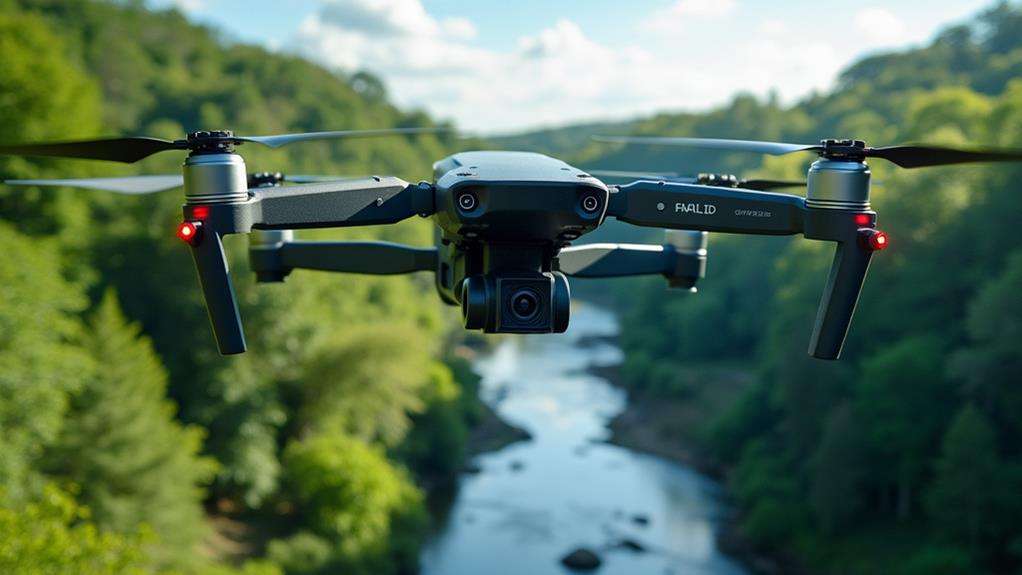
Unmanned Aerial Vehicles (UAVs) offer advanced capabilities for environmental monitoring, making them invaluable tools for border security operations. Equipped with sophisticated sensors, these drones can assess vegetation health and biodiversity, providing crucial data for environmental monitoring in border regions. They can also monitor water quality, detect pollution sources, and analyze changes in aquatic ecosystems, essential for safeguarding natural resources.
The integration of Artificial Intelligence (AI) in UAVs enhances their ability to identify environmental patterns and anomalies. This assists in proactive conservation efforts, ensuring that potential environmental threats are detected early. Additionally, drones are designed to operate in adverse weather conditions, ensuring reliable data collection regardless of environmental challenges. This capability is vital for continuous environmental assessments, even in harsh conditions.
To secure communication channels and protect sensitive environmental data during surveillance missions, sophisticated data encryption is implemented in drone systems. This ensures that data transmission remains secure and reliable.
Key benefits include:
- Vegetation health monitoring
- Pollution detection
- Reliable data collection in adverse weather
- AI integration for pattern recognition
These features collectively enhance the trustworthiness and interoperability of UAVs in environmental monitoring, ensuring comprehensive and secure data collection.
Enhancing National Security
Drones play a crucial role in enhancing national security by providing real-time threat detection across extensive border areas. Equipped with advanced sensors and AI, these UAVs enable agents to develop efficient response strategies, ensuring quicker and safer reactions to potential threats. By significantly improving surveillance capabilities, drones make it easier to monitor and secure borders effectively.
Real-Time Threat Detection
In today's technologically advanced world, real-time threat detection is a cornerstone of national security, particularly at borders. Drones equipped with advanced sensors, including high-resolution cameras and thermal imaging, significantly enhance surveillance capabilities. These UAVs can efficiently monitor vast and remote areas, ensuring optimal border security even in low-light conditions.
Artificial intelligence is integral to this process. Integrated into drones, AI enables intelligent identification of objects such as humans and vehicles. This optimization ensures faster and more accurate tracking of potential threats, providing critical situational awareness. Immediate data transmission to ground control stations empowers law enforcement with real-time information, allowing for swift responses to identified threats.
The use of drones facilitates proactive threat detection. By monitoring critical areas, authorities can anticipate and address illegal activities like drug trafficking and unauthorized crossings before they escalate. With a cruising speed of 100 km/h and operational ranges up to 200 km, drones substantially enhance detection and response capabilities across expansive border landscapes.
Key benefits include:
- Enhanced surveillance: High-resolution cameras and thermal imaging
- AI integration: Intelligent object identification and tracking
- Immediate data transmission: Real-time situational awareness
- Proactive threat detection: Anticipation and mitigation of illegal activities
Efficient Response Strategies
To bolster national security, efficient response strategies are essential in border surveillance operations. By leveraging Unmanned Aerial Vehicles (UAVs), border security can be significantly enhanced through real-time situational awareness. These drones enable U.S. Border Patrol to detect potential threats early, facilitating safer and more effective response strategies.
UAVs provide rapid response capabilities across over 13,000 miles of land and maritime borders. Their ability to cover vast and remote areas quickly reduces response times to security incidents. Advanced technologies such as thermal imaging and AI-driven analytics enable precise identification of potential threats, enhancing the effectiveness of law enforcement actions.
Additionally, drones serve as a visible deterrent against illegal activities. The presence of UAVs patrolling the skies discourages criminals from engaging in illicit behavior, knowing they are under enhanced surveillance. Integrating drones into border security operations also allows for more coordinated responses, improving communication and adaptability during emergencies.
Incorporating UAVs into border security operations means not just reacting to threats but anticipating and mitigating them with advanced technology. This proactive approach ensures a robust national security posture, keeping you a step ahead of potential threats.
Future Developments in UAV Technology
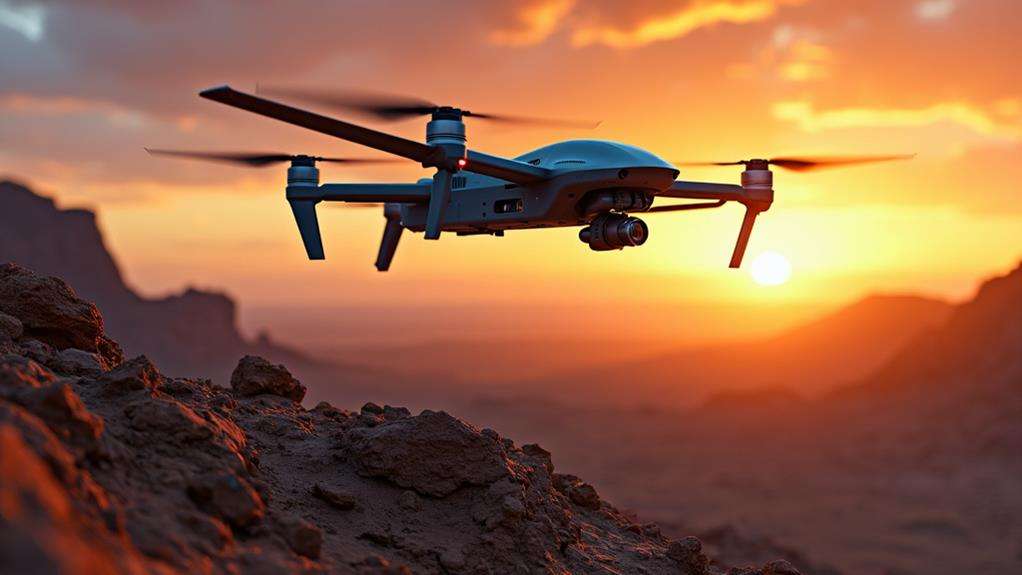
Envision a future where UAVs, enhanced with advanced AI and machine learning algorithms, autonomously patrol borders, detecting and addressing potential threats with exceptional accuracy. These advancements will revolutionize border security by enhancing UAVs' navigation and object detection capabilities, making surveillance more intelligent and efficient.
Future developments aim to significantly extend UAVs' operational endurance. Automated docking stations will enable seamless charging and maintenance in remote areas, while breakthroughs in battery technology will further increase flight durations. For instance, some drones, such as JOUAV, already achieve flight times of up to 480 minutes, enabling prolonged surveillance missions without frequent interruptions.
Enhanced payload capacities will allow future UAVs to carry sophisticated sensors and communication tools, facilitating comprehensive monitoring and data collection. This capability will enable border security forces to gather detailed, real-time information, thereby improving overall situational awareness.
Regulatory frameworks are also evolving to support the expanded use of UAVs. These frameworks will address privacy concerns and airspace management, ensuring that broader deployment in border security contexts is both effective and compliant with legal standards.
- AI and Machine Learning for Smarter Surveillance
- Automated Docking for Seamless Operations
- Extended Flight Times with Advanced Batteries
- Improved Payload Capacities for Comprehensive Monitoring

